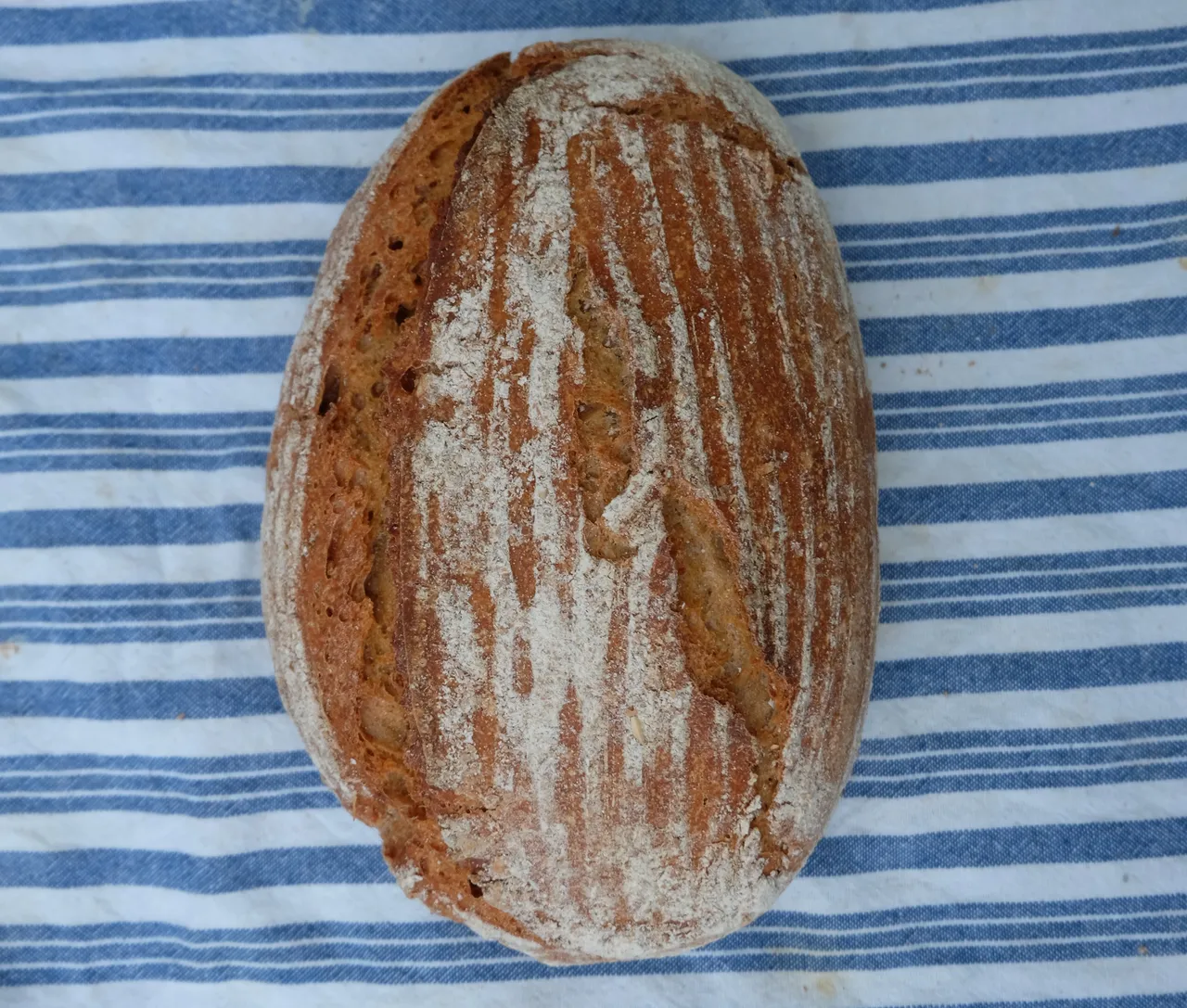Even if your oven is poor or average, you can make a nice bread in it. You'll only need the right tools.

The problem
For baking a good bread, the heat needs to be distributed properly. The temperature in the oven cannot change rapidly. Having some sort of inertia when distributing heat is desirable.
Professional electric ovens have the heating elements under the baking chamber which is lined with stone. The chamber itself is not very high and rather deep, the door seal it well and hold the steam well.
Home ovens have a range of options when it comes to placing the heating elements. Some are hidden, some are exposed, some have heat distributed with a fan. The door is usually big compared to the chamber and most heat escapes as you open it. The steam escapes even with the door closed.
My oven does not have a heating element below the chamber, the top one is exposed and burns things, the one with fan first dries things out, then burns them. The temperature probe is at the very top of the chamber and switches the heating off before the whole chamber reaches the desired temperature.

The solution
You will need a stable source of heat, a source of steam (for the first 15-20 minutes). The steam stops the crust from forming too quickly and allows the loaf to rise and expand without cracking for a while.
For the source of heat, it pretty much means we need something that can be heated up to release the heat into the bread, or some sort of screen to stop the heat from burning the bread directly. From what I know, there are two options here:
- something to bake the bread on
- something to bake the bread in
On
This pretty much means a baking stone, either being a stone, a tile or cast iron. You heat it up and place the bread on it so that it forms the base crust first and then grows outwards. If you have an upper heating element, you need to make sure it does not form the top crust too quickly. I usually put a baking tray between the loaf and the heater.
In
This will be a clay baker, cast iron, silicone or glass. They should come with a lid. You need to provide some steam for the bread to rise properly.
The clay baker is usually soaked in water before baking so it gives it back.
Cast iron dish is usually quite well sealed so the steam comes from the loaf itself. The silicone thingy isn't usually fully closed so ice cubes in the oven should do their work well.
The glass dish sadly can release the steam quite easily. But it still needs some source of it.
My bread
We bought a simple glass oven dish with a cover. It's oval and it fits a 600-1000g loaf very well. I've seen people baking 2kg loaves in it, but I don't really like it when the bread holds a shape of the dish it was baked in. It doesn't give much information about how well it was prepared.
I started using it with J. Hamelman's Vermont sourdough with added wholewheat flour. The last time I made its basic version was when it felt that spending more than 30 minutes on bread preparation made it a very complicated thing to do. Time flies.
The bread rose nicely, got ready for baking as instructed by the master. I set the oven to 250 C degrees, put the dish into the oven for 30 minutes. Then I prepared a square baking paper sheet, placed the bread on it diagonally, scored it, put into the dish, covered and baked. I reduced the temperature to 230 C degrees after putting the bread in the oven.

Since I had two loaves, I put the second one in the fridge so that it wouldn't overproof. It still needed a bit time so slowing it a just little didn't do harm.
After the first bread was ready, I popped the dish back in the oven to reheat it for 10 minutes on 250 C degrees and then repeated the process.

The bread baked nicely, it opened well, though it did crack in a couple places. I assumed it was the lack of steam.
The second try is a yeast water bread. I will write more about the bread itself later (you can read about the yeast water here). Now only the baking experience.

I sprayed water on the dish cover before closing the bread. I used the same temperatures and got a nice loaf. It did also crack uncontrollably a little, but I think it was because of the weak structure of the dough - it was 20% wholemeal rye flour and was rather loose in structure.

That's about it. I think I need to lower the temperatures by 10-20 degrees as I get quite a thick crust (not by much, but a bit too thick).
I will keep you posted if I make new discoveries.